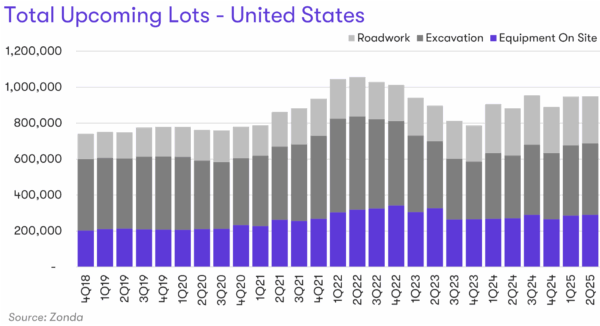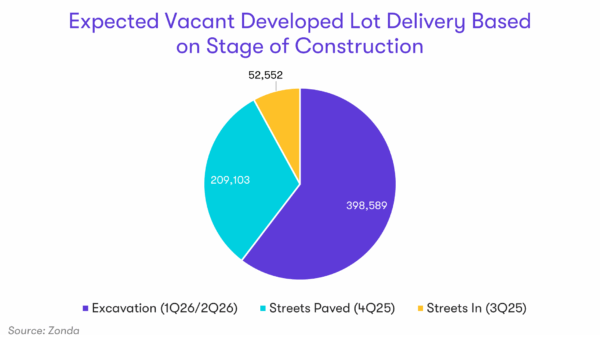New Home Market Update
Total upcoming lots in 2Q25 increased 7.6% year-over-year and were flat quarter-over-quarter. Additionally, they were up 26.8% compared to the same quarter in 2019.
Among total upcoming lots, roadwork was flat year-over-year at +0.1%. Roadwork is comprised of the two smaller stages–streets paved and streets in–and represents the last step in lot development. Lots in the excavation stage were up 13.7% year-over-year, while those with equipment on site were also up 6.9%.

The largest share of total upcoming lots were in the excavation stage in 2Q25, totaling nearly 400K. These lots have an expected delivery between 1Q26 and 2Q26 (the range represents different timeframes from local entitlement processes). Note, not all of the lots in excavation will match Zonda’s estimated timeline.

“The land and lot backdrop reveals a key insight: we don’t have a glut of supply, but the market is ready to support more construction once builders feel confident again,” said Wolf.
